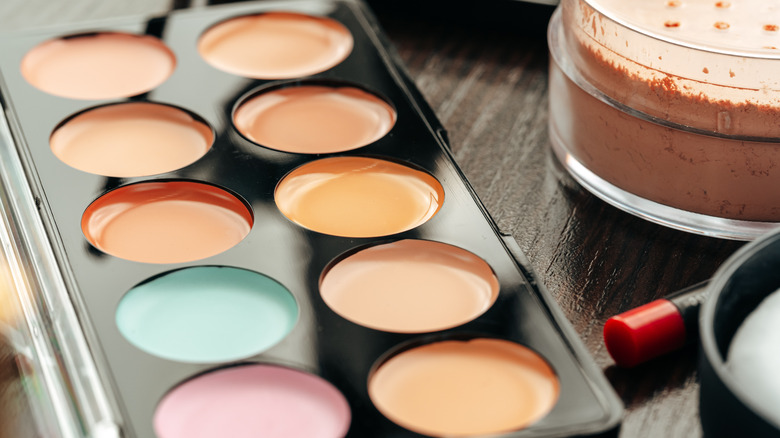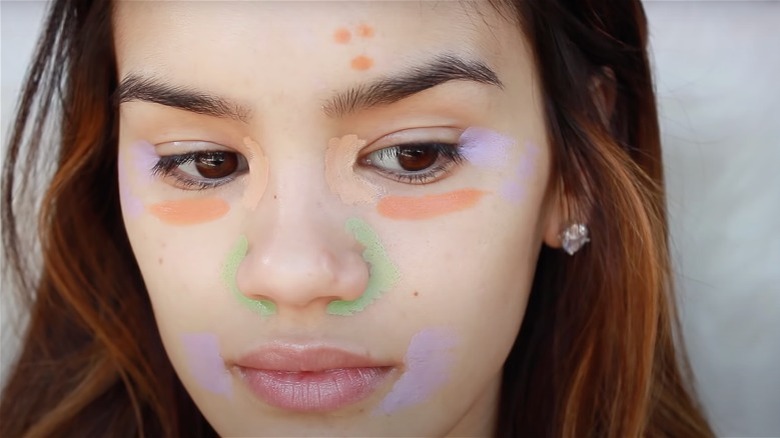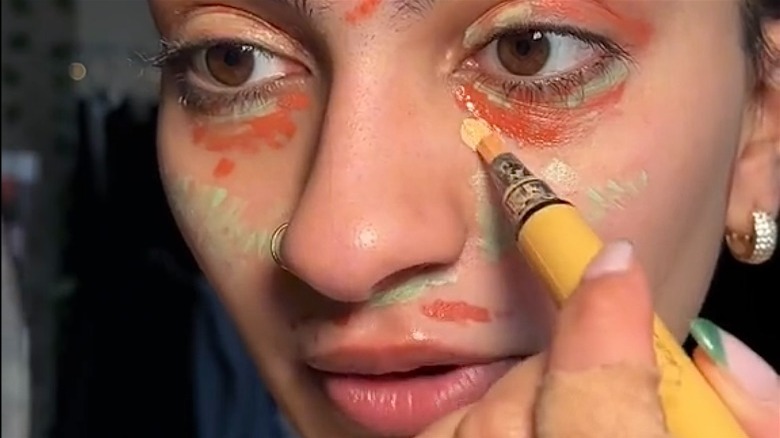Where In Your Makeup Routine Should A Color Corrector Go?
Achieving the perfect makeup base takes a lot of practice, especially when you're dealing with specific skin concerns. From glaring red zits peeking through your foundation to dark circles and eye bags refusing to be concealed, your problematic skin concerns and discoloration can hinder you from achieving that seamless, uniform finish you want. And guess what? Applying more foundation or concealer to cover them up only brings even more attention to them. But not to worry, because color correcting is here to help.
Color correcting is a makeup technique where colored or tinted makeup products are applied to your skin's problem areas to cancel or balance discolorations like dark circles, redness, acne scars, and blemishes. Color correcting works because it's built on the principle that colors opposite to each other on the color wheel neutralize each other.
But as much as you need to know what correctors are best for your skin tone, you also need to know where in your makeup routine they go. And it turns out you don't want to apply color correctors in the same order as your traditional concealer — you want to apply it before going in with any complexion makeup at all.
Apply color-correcting concealer directly onto primed skin
So you have the color correctors you bought the day before, and you can't wait to try them out. But there's a slight problem: You don't know where it goes in your makeup routine. Before foundation? After foundation? What about traditional concealer? Well, we're here to help.
As mentioned, you want to apply color-correcting concealer directly onto primed skin. By applying color corrector before the rest of your makeup routine — right after applying moisturizer, sunscreen, and primer — you'll get the most coverage possible. This will create an even finish for your foundation to blend seamlessly into. You can also color correct with a small concealer brush if you want more coverage or your fingers for a lighter corrective layer.
It's also important to identify the skin concerns you're trying to hide and stick to those areas. Color correctors are to be used only on the problem spots — not the entire face like a foundation — so applying them to areas without discoloration will leave your makeup worse. So, when applying your correctors, focus on the parts where the concern is most apparent, be it dark circles or sallowness.
How exactly do I color correct, and what colors do I use?
Say you have some redness around your jaw and cheeks. To neutralize it, apply a thin layer of green color corrector only to the red areas, blend with a small brush or your fingers, and then use your regular concealer or foundation. Green lies opposite of red or pink on the color wheel and, as such, works great for balancing out redness. However, for large red blemishes from skin conditions like rosacea, you may want to use a green color-correcting primer instead to set an even base.
You may also have dark under-eye circles to conceal. The only difference here is the color corrector you'll use depends on your skin tone. Dark circles for lighter skin tones are usually bluish, so a peach-toned color corrector works best here. But if you have medium or tan skin, a yellow color corrector is the way to go. And orange is the correct color for darker skin tones. This principle also works for concealing your dark spots.
You can also use color correctors to change the warmth of your complexion products. For example, if your foundation is too warm, mix a blue color corrector in to tone it down. The same goes for makeup that is too cool; an orange color corrector will add some much-needed warmth. Magic, right? Color correction is the key to a more even base, and with how wonky skin can get sometimes, we all need any help we can get from these tinted makeup godsends.


